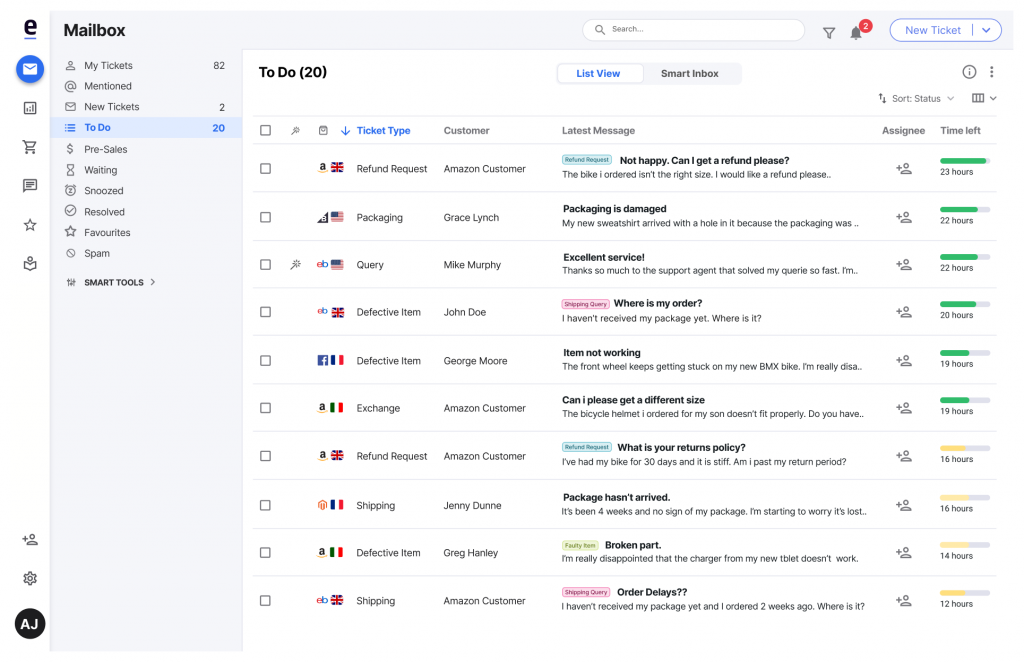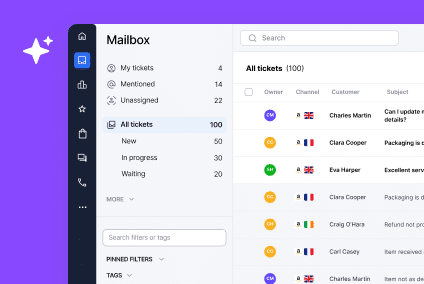The eCommerce landscape is shifting dramatically as we move through 2025. The multichannel eCommerce software market valued at $110.3 Million in 2023 and projected to reach $194.9 Million by 2030. What’s more, it’s growing at a CAGR of 10.1%. That means businesses can no longer afford to rely on single-channel strategies.
To add to that, modern consumers expect seamless shopping experiences across multiple platforms, and 75% of shoppers now use both digital and physical touchpoints on the same customer journey.
Wondering which multichannel eCommerce software tools are truly essential for success in 2025? You’re in the right place. This comprehensive guide breaks down the must-have platforms that will help you sell across multiple channels, manage inventory efficiently, and deliver exceptional customer service.
Why multichannel eCommerce software matters more than ever
The numbers speak for themselves. As of September 2024, Shopify data revealed that it held roughly 30% of the US eCommerce software market. That said, relying on a single market doesn’t cut it in 2025. Today’s successful retailers need comprehensive multichannel eCommerce software that can handle everything from product listing automation to unified customer service.
The shift is driven by changing consumer behavior. According to Retail Dive, about 87% of shoppers start their shopping journeys via digital means, and Shopify research shows that omnichannel customers shop 1.7 times more than single-channel shoppers. For businesses selling across multiple channels, the right software stack is essential for survival.
Top multichannel eCommerce software categories to consider in 2025
1. Comprehensive multichannel management platforms
Shopify Plus remains a powerhouse for businesses looking to scale across multiple channels. With native integrations for Amazon, eBay, and social media platforms, it provides robust Shopify Amazon integration capabilities that streamline cross-platform selling. For Shopify users specifically, understanding how to provide exceptional Shopify customer support across multiple channels is crucial for success.
ChannelAdvisor (now Rithum) continues to be a leader in the enterprise space. Major players in the market include Shopify, Adobe Commerce (Magento), BigCommerce, Salesforce Commerce Cloud, Oracle Commerce Cloud, IBM WebSphere Commerce, Wix, Brightpearl, and ChannelAdvisor. ChannelAdvisor excels in digital marketing automation and offers extensive marketplace integrations, making it ideal for larger retailers with complex multichannel operations.
Linnworks has carved out a significant niche in multichannel inventory management. The platform offers more than 100 integrations and covers everything from order and inventory management to analytics and forecasting, making it particularly strong for businesses prioritizing operational efficiency.
2. Customer service and support platforms
The importance of unified customer support cannot be overstated in 2025. Over 70% of consumers believe AI significantly boosts the quality of customer service, making AI-powered support tools essential.

eDesk has emerged as the best eCommerce helpdesk software for multichannel sellers. eDesk offers a centralized inbox, automated ticket routing, a self-service knowledge base, live chat, social media monitoring, and reporting and analytics. The platform’s strength lies in its ability to unify customer conversations from all channels into a single interface.
Zendesk continues to evolve with AI capabilities, with Zendesk AI reducing ticket triage time by 92%. For businesses looking for an eCommerce customer service platform that scales with growth, Zendesk’s robust feature set and marketplace integrations make it a solid choice.
3. Inventory and order management solutions
Effective multichannel order management is crucial as businesses expand across platforms. The global multichannel order management market was projected to reach a value of $3.8 billion by the end of 2024 and grow to $10.6 billion by 2033, with a CAGR of 12.0%, according to research by Dimension Market Research.
Cin7 offers comprehensive eCommerce integration tools that connect inventory, sales, and customer data across multiple channels. The platform excels in real-time inventory synchronization, making it ideal for businesses that need accurate stock levels across all sales channels.
DEAR Systems is a powerful alternative, providing advanced inventory forecasting, order management, and manufacturing features. It’s particularly well-suited for B2B sellers and multichannel retailers seeking scalable, integrated solutions to streamline operations and expand across sales channels.
Orderhive is a popular inventory and order management platform known for its user-friendly interface and extensive multichannel integrations. It offers real-time inventory tracking, automated order processing, and shipping management, making it useful for small to mid-sized eCommerce businesses.
4. Product listing and automation tools
Product listing automation is becoming increasingly sophisticated in 2025. AI can play a big role in helping you automate the repetitive tasks that keep your online store functioning, including product recommendations, loyalty discounts, low-level support, and more.
DataFeedWatch specializes in product feed management and optimization for multiple advertising channels. It supports integration with over 2,000 shopping channels, marketplaces, and comparison shopping engines, including popular platforms like Google Shopping, Amazon, eBay, Facebook, and Instagram.
Feedonomics offers advanced feed management capabilities with AI-powered optimization features that help improve product visibility across multiple channels.
2025 trends shaping multichannel eCommerce software
AI-powered support and automation
The integration of AI into eCommerce support automation is accelerating rapidly. These AI tools are now essential for managing customer inquiries at scale across multiple channels. They help businesses grow service without sacrificing quality.
Unified inbox solutions
Today’s eCommerce customer engagement relies on unified communication strategies. Next-gen customer success platforms boast robust API frameworks connecting CRM systems, marketing tools, product analytics, billing systems, and more.
This interconnectedness is breaking down data silos that have traditionally held customer success back. Leveraging AI in customer service enhances these unified experiences.
Advanced omnichannel returns management
Returns management is becoming a key differentiator in 2025. In 2023, buy online, return in-store (BORIS) accounted for 50% of online returns, worth $123 billion, according to CBRE. Software that makes returns seamless across channels is a necessity in today’s eCommerce climate.
Product sourcing and data management
Smart product sourcing relies on sophisticated data management. Modern multichannel platforms leverage advanced analytics to help businesses make informed sourcing decisions and optimize their product mix across different channels.
How to choose the right multichannel eCommerce software stack
When evaluating multichannel eCommerce software options, consider these key factors:
Scalability is central
North America contributed the highest to the Multi-Channel eCommerce Software market, accounting for approximately 38% of the total revenue in 2023, according to Verified Market Reports, indicating strong market growth that your chosen software must accommodate.
Know your omni from your multi
Understanding the difference between omnichannel vs multichannel marketing is crucial when choosing your software stack. While both approaches involve multiple channels, omnichannel focuses on creating seamless, integrated experiences across all touchpoints.
Customer support features matter
Ensure your chosen eCommerce helpdesk software can handle inquiries from all your sales channels in a unified interface.
Don’t pay small with automation
Prioritize solutions that offer comprehensive product listing automation and inventory synchronization to reduce manual work.
AI capabilities drive growth
With 47% of Gen Z using generative AI on a weekly basis, according to research by the Walton Family Foundation, choosing software with AI-powered features positions your business for future growth.
Best practices for implementing multichannel software in 2025
We know there’s a lot to take in in this guide. But the good news is that implementation is actually pretty simple if you remember these three best practices:
- Start with a thorough audit of your current systems and identify gaps in your multichannel strategy. Focus on implementing one category of software at a time, beginning with your core multichannel management platform. Then you can add specialized tools for customer service and inventory management.
- Ensure your team receives proper training on new systems, as the complexity of modern multichannel eCommerce software requires dedicated learning time. Giving them time to get familiar is one of the most important investments you can make.
- Finally, plan integration testing between different platforms. This will ensure seamless data flow across your entire software stack.
Looking ahead: The future of multichannel eCommerce
One thing is certain: The multichannel eCommerce software landscape will continue evolving rapidly.
eCommerce sales as a percentage of total retail have been steadily growing, with eCommerce brands accounting for 16.0% of all retail sales in the US as of the second quarter of 2024, according to SellersCommerce.
Businesses that invest in comprehensive multichannel software now will be well-positioned to take advantage of this growth. Choosing solutions that adapt to changing consumer behaviour and emerging technologies while providing scalability is key to long-term success.
Success in 2025’s multichannel eCommerce environment depends on creating an integrated ecosystem that delivers seamless experiences across every customer touchpoint. Focusing on the essential software categories covered here equips your business to compete and grow in a crowded digital marketplace.
Simplify your multichannel customer experience
Multichannel customer service is more complex than ever, with inquiries flooding in from every platform your customers use.
eDesk’s centralized inbox and AI-powered automation bring all these conversations into one place, making it easier to manage customer inquiries across all sales channels. As your business scales and you improve response times, eDesk helps multichannel sellers deliver consistent, high-quality support that drives growth.
See how eDesk can fit into your multichannel software stack and help your business thrive in 2025 and beyond: Book a demo now.




